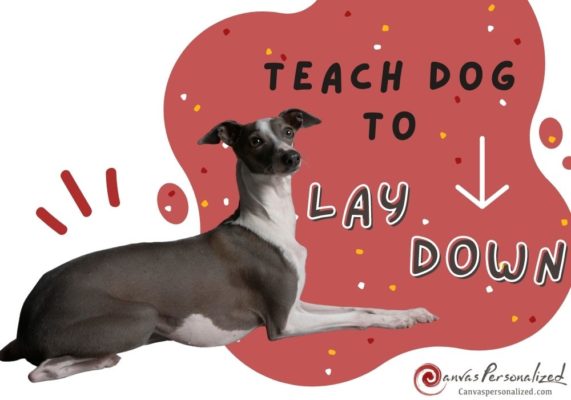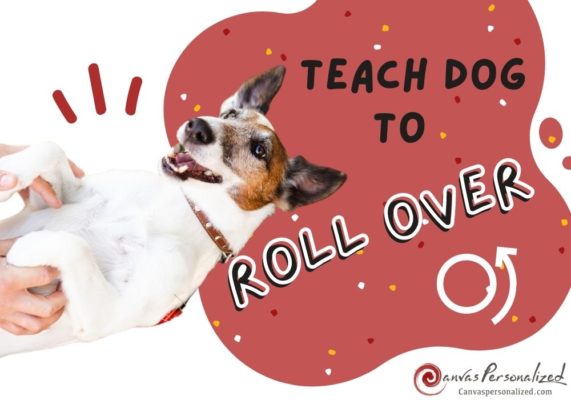Deaf dog training can be challenging for its parents, especially for first-time owners who adopt a new puppy. But it’s not impossible to train because a deaf dog can learn just as well as a hearing dog if they are patient, work hard, and have the proper methods. This article from Canvas Personalized will discuss different ways to help you train a deaf dog well.
Importance Of Deaf Dog Training
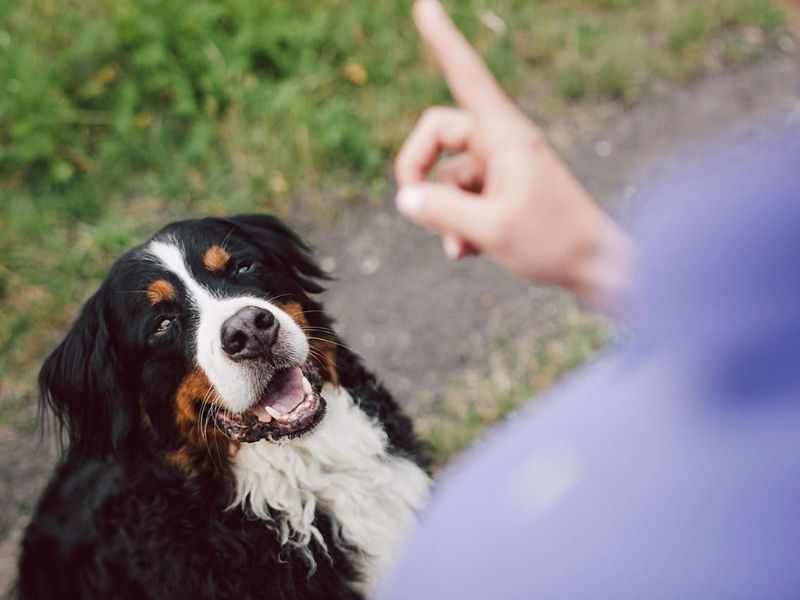
It is essential to train a dog that can’t hear. Here are some reasons why it’s necessary to train a deaf dog:
Safety: A dog that can’t hear orders or warnings could get into an accident or get lost. Training a deaf dog to respond to visual cues can help prevent accidents like these. This will help keep the dog safe.
Communication: Training deaf puppies to recognize visual cues and hand signs can help the dog and its owner talk to each other better. This can help the two of them get along better and avoid mistakes.

Behavior: Just like any other dog, deaf dogs need to be trained to learn how to behave well. Learning how to train a deaf dog with respect and good manners can help it become a well-mannered and fun friend.
Socialization: Teaching a deaf dog can help it learn how to get along with other dogs and people and feel more comfortable around them. This is important for the social and mental health of a dog.
Hence, training deaf puppies is essential for their safety and their ability to communicate, behave, and get along with others. It can help the dog and its owner become closer, making their relationship happier and healthier.
Understanding Deaf Dogs
Causes Of Deafness In Dogs
Dogs can go deaf for many reasons, including their genes, getting older, getting hurt, or getting infected. Some breeds are also more likely than others to be hard of hearing. It is often caused by a change in the dog’s genes, and some kinds, like Dalmatians, Australian Cattle Dogs, and English Setters, are more likely to get it.
Deafness can also happen as a side effect of some medicines or anesthetics. Dog owners need to know what could make their dogs deaf and take steps to avoid or deal with the problem.
Types Of Deafness
There are two kinds of deafness in dogs: deafness that is born with them and deafness that they get over time.
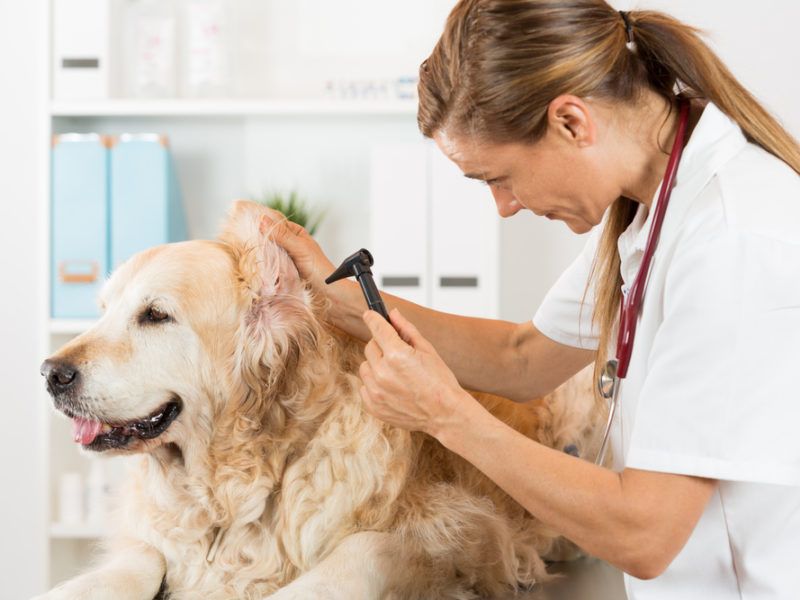
Congenital deafness: This kind of deafness occurs when the dog is born or passed down from its parents. Some dog types are more likely to be born deaf, such as Dalmatians, Australian Cattle Dogs, and English Setters.
Acquired deafness: This kind of deafness can happen at any point in a dog’s life because of changes that come with getting older, an accident, or an infection. Some of the most common reasons people get deaf are having chronic ear infections, being around loud noises, and inadequate response to medicine.
Signs And Symptoms Of Deafness
The dog may have different signs and symptoms depending on how bad the hearing is. Here are some of the most common signs:
Lack of response to sounds: A deaf dog might not respond to sounds that usually get their attention, like a doorbell, clapping, or being called by name.

Sleeping more: Deaf dogs may sleep more than usual since they cannot hear what is happening around them.
Unresponsive to commands: If your dog is deaf, it won’t be able to respond to your verbal commands, such as “come” or “sit.”
Startled easily: Deaf dogs may get startled if someone approaches them without their knowledge.
Increased barking: Some deaf dogs may frequently bark because they cannot hear themselves or others.
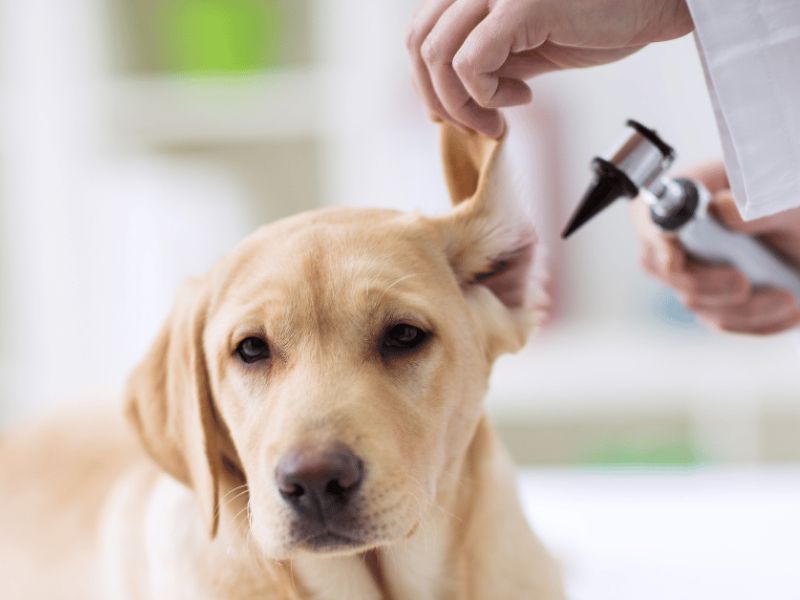
Difficulty balancing: Some dogs might lose their balance more often if they lose their hearing ability.
Changes in behavior: Since deaf dogs can’t hear or understand what’s happening around them, they may become shy, nervous, or aggressive.
If you think your dog might be deaf, you should have them checked out by a vet to confirm the diagnosis and discuss how to train a deaf dog.
How To Train A Deaf Dog
1. Teach Focus
If your dog is deaf, you must rely on hand gestures and other body language to convey your meaning. Training a deaf dog to pay attention to you is, therefore, the first step to communicating with it.
First, find a quiet spot at home where you won’t be interrupted. Put your dog’s favorite treats on the floor before you and sit down. Hold out for them to look at you, and reward them when they do.
Treat them again if they stick around and keep eye contact with you. After you’ve done the same thing several times in a row, you should try doing it somewhere else.
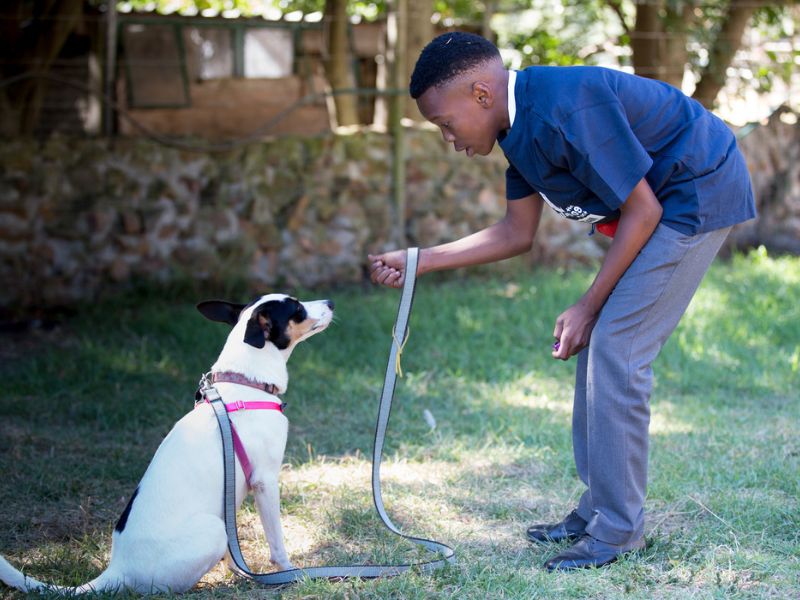
Even if your dog is distracted, you have some ways to get his attention. You can get some inspiration from the following list:
- Touch your dog softly and gently: It would be best to pet your dog in the same spot every time, such as the shoulder or the top of the rear. Avoid startling your dog by being careful with your movements.
- Light signals: A flashlight can be used at any time, but it is most effective while your dog is outside at night, such as when walking in the yard.
- Laser pointer: This will be visible in broad daylight, though you should avoid directing the light directly at your dog’s eyes and be aware that some dogs may develop an obsession with following the beam.
- Vibrations: Stamping your foot on the floor is one method to attract the attention of a deaf dog. The vibrations from the floor may be all it takes to attract your dog’s attention.
2. Try Hand Signals And Visual Cues
Training a deaf dog requires using both hand signals and visual cues. These cues are visual, non-verbal means to communicate with the dog, such as hand signals or body language.
Some people employ American Sign Language, while others use more conventional ones. Remember to maintain uniformity by consistently utilizing the same cue for the same action. Also, ensure there is a clear separation between each signal.
Dogs are incredibly perceptive, yet they can become confused by too many similar signals. Tricks like the “rollover,” “sit,” or “lie down,” and dog sports like agility and rally can also be communicated using hand gestures.
First, you’ll want to get your dog’s undivided attention so you can use the hand gesture instead of just speaking the command. After that, training the dog to obey your instructions is standard procedure.
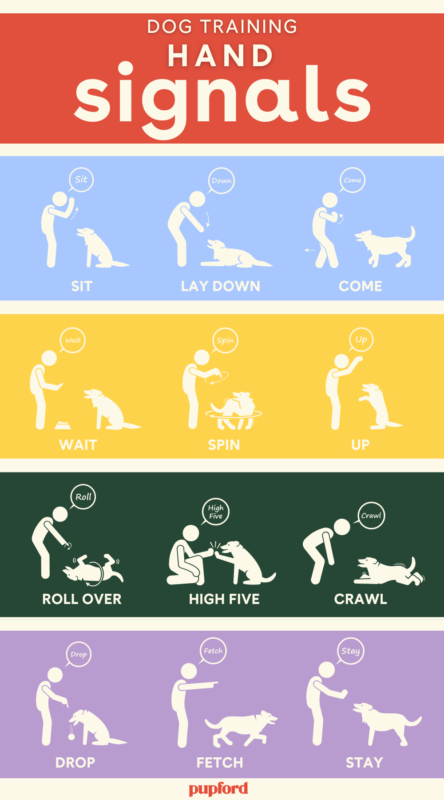
It may take more time and patience, but a deaf dog may be trained just as well as a hearing one with the help of hand gestures and visual cues. When the dog obeys your directions, it is crucial to praise and treat it.
3. Use of Vibration And Scent Cues
Since a deaf dog cannot hear vocal commands, finding other ways to communicate with it during training is vital. A dog can be commanded using a vibration collar, for instance. A slight vibration is emitted, which the dog may sense, and it works with a visual cue or hand gesture.
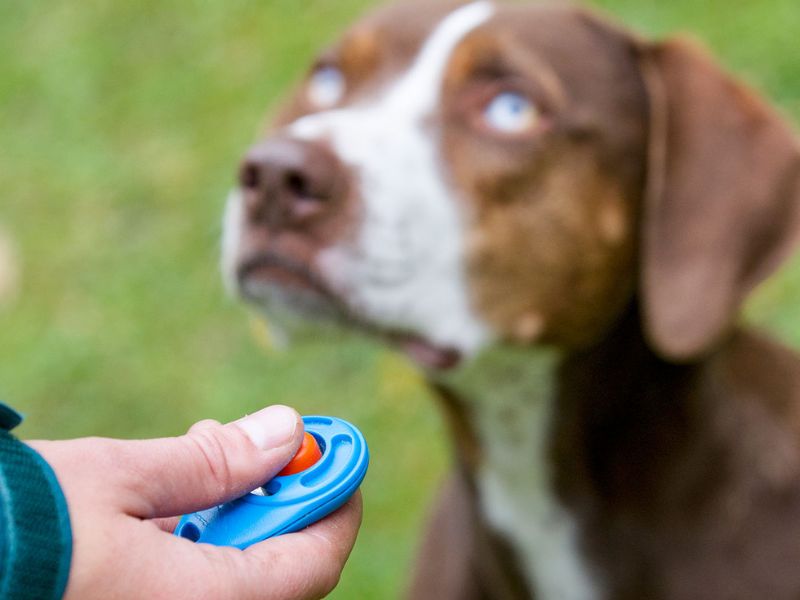
Scent cues are another technique for learning how to train a deaf dog. This method involves communicating through a distinct aroma, such as an essential oil. A dog, for instance, could be taught to come when it detects the scent of lavender. Consistency and repetition are keys to this strategy’s success.
Remember that these strategies work best when introduced gradually, reinforced with positive training, and coupled with a reward. It’s also a good idea to seek advice and assistance from a professional trainer or vet who has worked with deaf dogs before.
4. Lure Training
Lure training is a sort of positive reinforcement training in which a dog is enticed to do an action by the use of food or playthings. Due to their inability to understand verbal commands, deaf dogs may benefit from this training.
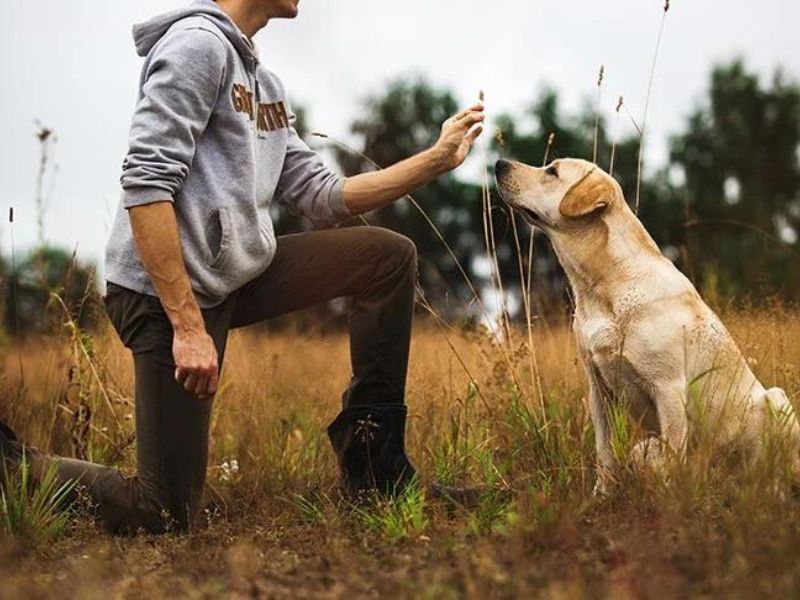
Choosing a highly desirable treat is the first step in lure training a deaf dog. Ensure your dog is paying attention, and then slowly lift a reward in front of their nose to cue them to sit. Your dog’s nose and eyes will lead them to the treat, and they’ll sit for a better look. Once they sit, show appreciation with a thumbs up and hand over the reward. You can use luring to train them to do many valuable things, such as follow you, walk on a leash, roll over, and more.
You can replace the treat with the hand signal as your dog learns the behavior. A clicker can be a visual marker to let your dog know they have done the right thing. Consistent practice with lure training will allow your deaf dog to learn various behaviors.
5. Capturing
Capturing is an effective way for pet owners to learn how to train a deaf dog daily. In dog training, you need to record a dog’s spontaneous behavior by timing the behavior and rewarding the dog with a treat. For instance, you can utilize capturing to teach your dog the “down” command. It would be best if you held off until your dog was in a position to lie down. As soon as they do, mark the behavior as “good” and reward them.
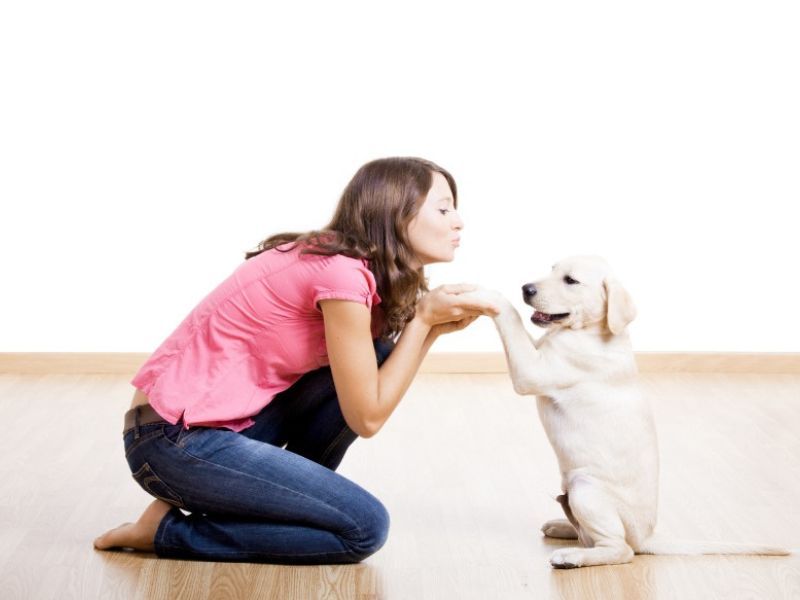
Teaching a dog a new behavior with this method takes time and effort, but it can be successful. Remember that it can’t be the same as the hand signal to indicate the action. Give the hand signal as soon as your dog begins the action. Deaf dogs can be taught new skills and become obedient companions by observing and reinforcing appropriate measures.
6. Startle Training
Loss of hearing in older dogs can be especially problematic because it deprives them of important auditory cues. Any dog can nip in fear. Therefore, it’s essential to desensitize and reward your pet for being startled. Deaf dogs can be taught to recognize their owner’s voice and comply with their orders through startle training.
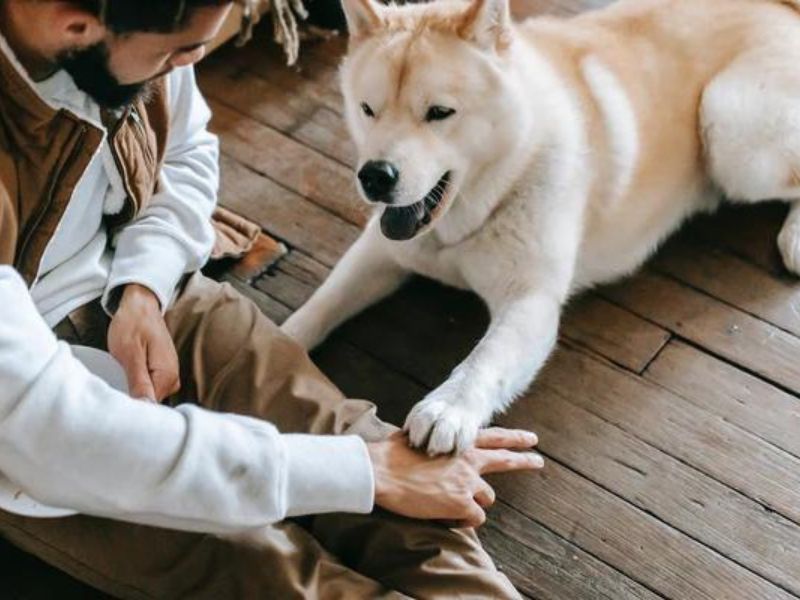
Start whenever your dog is awake. Touch them softly and consistently in the exact location, then immediately reward them. Once your dog gets accustomed to and even eager for your contact, you can start training a deaf dog while it sleeps.
Safety Tips For Training A Deaf Dog
Training deaf puppies can be a rewarding experience, but it is essential to take some safety precautions to ensure that the training sessions are safe for both the dog and the dog owners. Here are some safety tips for training a deaf dog:
Never use a shock collar: Your dog will learn to link training sessions with pain and punishment if you use a shock collar or the shock setting on a collar. Talk to a dog trainer before putting a vibrating collar on your dog.
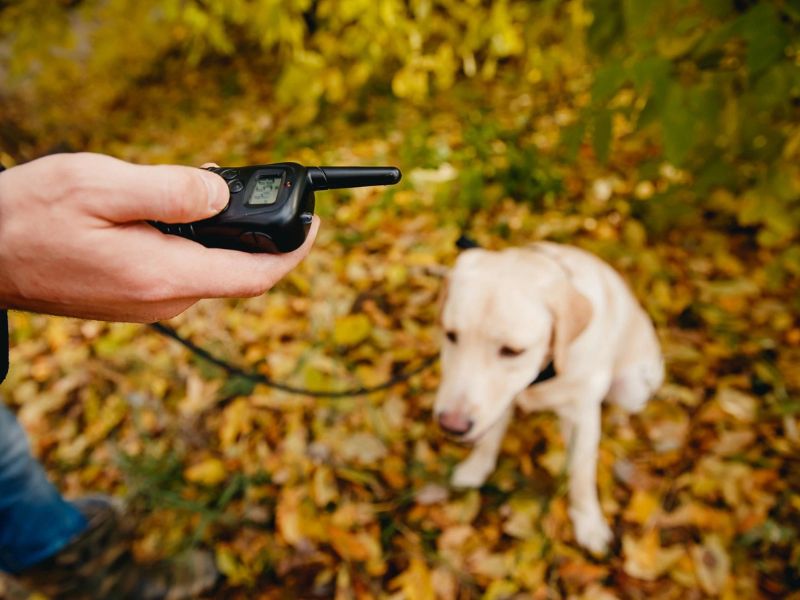
Keep an eye on your environment: When walking your deaf dog, open your mind and eyes. Remember that, unlike hearing dogs, they won’t react to sudden noises or individuals they can’t see; you’ll need to rely on your training techniques to get their attention and alert them to danger.
Keep an eye on your dog: There is a higher risk of injury for deaf dogs than hearing dogs. Keep them on a leash, and never let them run free when outside. Put a deafness indicator on your dog’s identification tag.
Try not to frighten your dog: Your dog may become frightened and growl if it cannot hear you approaching it. We recommend being overly friendly with your dog and rewarding it if you pet them on the shoulder or back. This will help prevent your dog from associating those touches with something negative.

Communicate verbally while issuing orders: This might make little sense at first, but bear with me. Dogs are excellent at understanding their owners’ body language, so it may help to speak the orders to them along with your everyday speech.
Keep your dog under control: Training with a leash is essential for all dogs, especially deaf dogs. Your dog may become easily distracted in various settings, especially while experiencing new environments. Leash training is necessary for both their and the public’s well-being.
>>>Check out the comprehensive guide to leash train a puppy or a dog walk on a leash!
Avoid punishment: Negative reinforcement and punishment should be avoided with a deaf dog because they might lead to anxiety and even hostility.
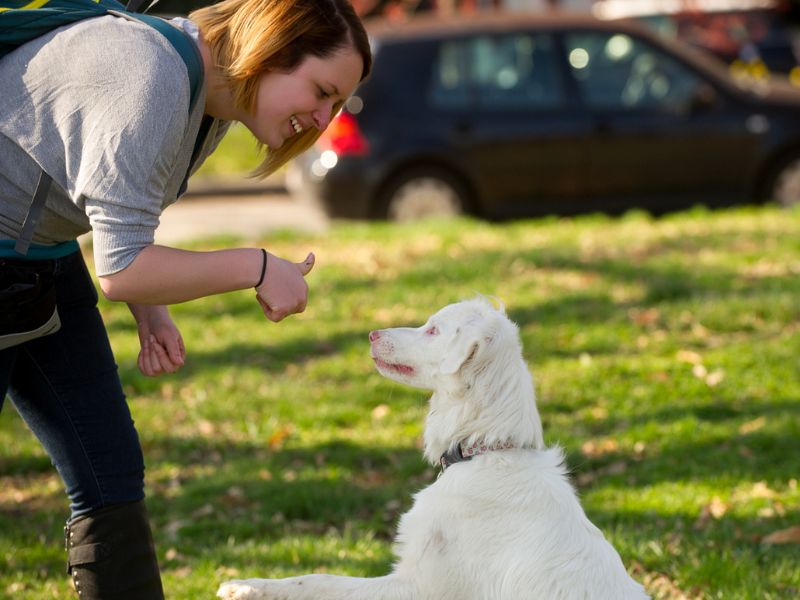
Be aware of body language: Listen to your body language and avoid threatening or hostile gestures around your dog. Always remember to show your affection and reward good behavior.
Be patient: It may take longer to train a deaf dog than a hearing dog since you must ensure the dog is relaxed and comprehends what you’re attempting to teach it.
>>>Further reading:
- 5 Easily Steps For Crate Training For Dogs You Should Know
- Bell Training For Dogs: A Step-by-Step Guide To Potty Train and More
Deaf dog training requires a unique method to fit the dog’s needs. The keys to success are having patience, being consistent, and giving good feedback. By using hand signals and other non-verbal ways to talk to their deaf dogs, owners can successfully communicate and build strong relationships with them. These techniques from Canvas Personalized will help your deaf dog live a happy life like any other dog.




